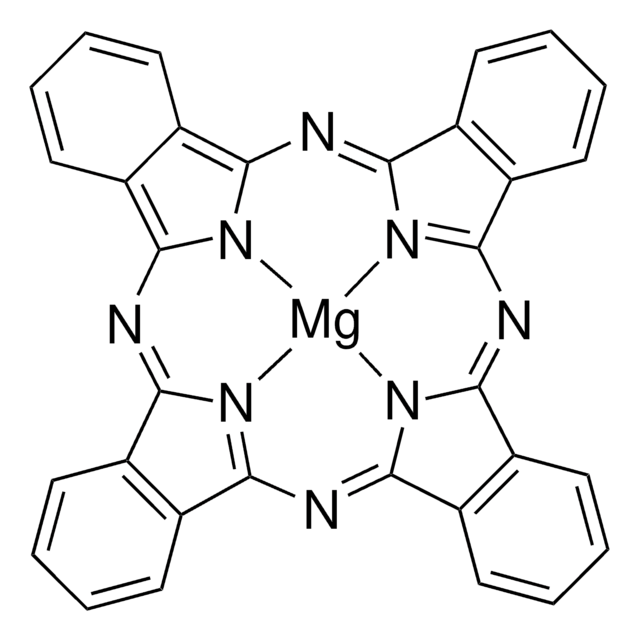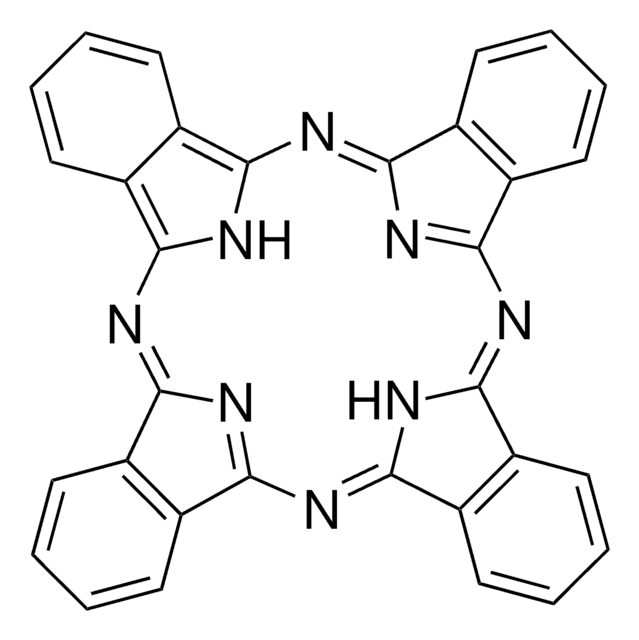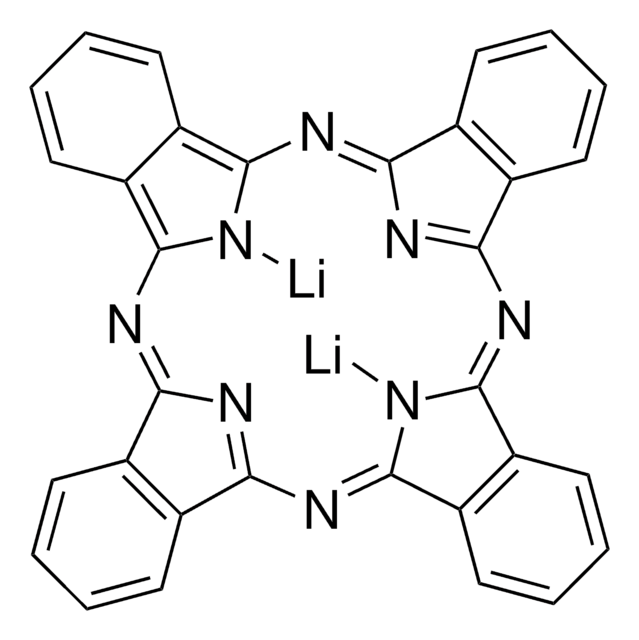931985
Phthalocyanine
Sinônimo(s):
Dehydrophthalocyanine, H2Pc, Pigment Blue 16
About This Item
Produtos recomendados
descrição
PL: 418 nm
μh ≈ 4.0 x 10−5 cm2 V−1 s−1
Nível de qualidade
pf
>300 °C (dec.)
temperatura de transição
Tg >350 °C ((0.5% weight loss))
solubilidade
DMF: soluble
Energia orbital
HOMO 5.35 eV
LUMO 3.35 eV
Absorção UV
λ: 279 nm Amax
λ: 693 nm Amax
cadeia de caracteres SMILES
c1ccc2c3nc(nc4[nH]c(nc5nc(nc6[nH]c(n3)c7ccccc67)c8ccccc58)c9ccccc49)c2c1
Procurando produtos similares? Visita Guia de comparação de produtos
Aplicação
In the field of organic electronics, H2Pc has been explored as a popular Hole Injection Layer (HIL) material for organic light-emitting diode devices (OLEDs).This special compound has also been explored for solar cells application given its robust and intensely colored macrocycles (blue pigments) with high chem., thermal and light stability, properties that are of paramount importance for realistic photovoltaic applications. H2Pc have attracted special attention as photosensitizers for dye-sensitized solar cells (DSSCs).
In biomedicine, phthalocyanine can serve as selective fluorescent probes for bioanal. and bioimaging, and as efficient photosensitizers for photodynamic therapy of cancer and other non-cancerous conditions.
produto relacionado
Código de classe de armazenamento
11 - Combustible Solids
Classe de risco de água (WGK)
WGK 1
Ponto de fulgor (°F)
Not applicable
Ponto de fulgor (°C)
Not applicable
Certificados de análise (COA)
Busque Certificados de análise (COA) digitando o Número do Lote do produto. Os números de lote e remessa podem ser encontrados no rótulo de um produto após a palavra “Lot” ou “Batch”.
Já possui este produto?
Encontre a documentação dos produtos que você adquiriu recentemente na biblioteca de documentos.
Nossa equipe de cientistas tem experiência em todas as áreas de pesquisa, incluindo Life Sciences, ciência de materiais, síntese química, cromatografia, química analítica e muitas outras.
Entre em contato com a assistência técnica





